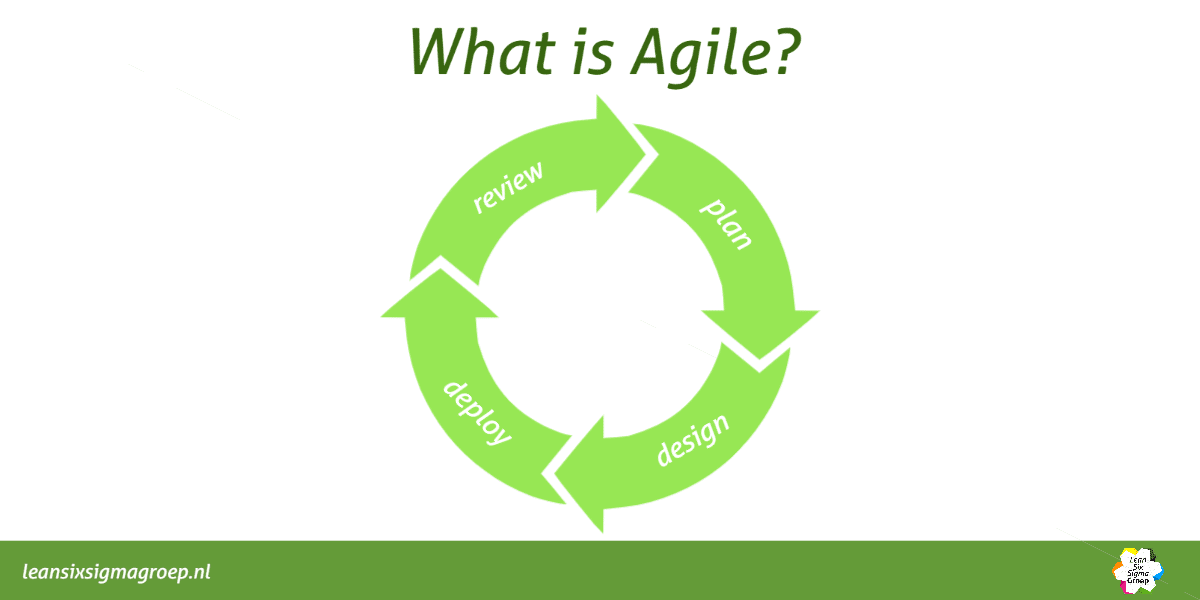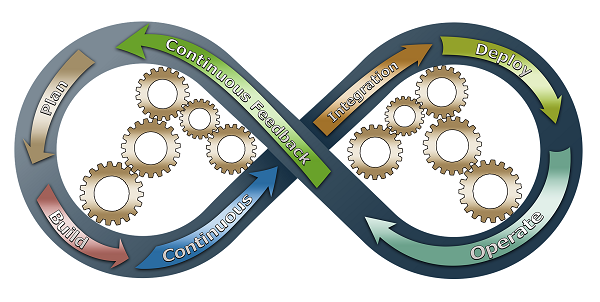What is Agile?
Work agile as an organizationAgile is a way of working where agility is paramount. An organization that executes a project based on the Agile methodology is aware of the fact that circumstances are changing and knows how to respond smartly. Customer satisfaction is central.

The business term originally comes from the IT world, which stands for developing software in short sprints (iterations). Working software is delivered at the end of each short sprint, which lasts two to four weeks. The customer provides feedback on this. On the basis of which developers of software. As a result, the software is quickly tested in practice and offers more value to customers.
In 2001 a group of seventeen software developers drew up the so-called Agile manifesto. The document of only 68 words and the 12 principles behind it provide guidelines for making software effective. But now Agile has also shown its value in many other industries. You can therefore replace the term “software” in many situations with “product”.
|
Table of content
|
Agile way of working
| People and their interaction | above | processes and tools |
| Working products | above | comprehensive documentation |
| Cooperation with the customer | above | contract negotiations |
| Responding to change | above | following a plan |
12 principles have been formulated from the above. All these points are met when making decisions.
That is why we also say: The decision making process matters!
12 Agile principles
If you interpret the principles more generally for products rather than just software, you can formulate them as follows:
- Our top priority is to ensure customer safety according to fast and continuous delivery of valuable products.
- Welcome changing needs, even late in the development process. Agile processes use change to provide a competitive advantage for the customer.
- Deliver regular working products. Preferably every few weeks to at most every few months.
- People from the operational, tactical and strategic level have to work together daily during the entire project.
- Build projects around motivated individuals. Give them the environment and support they need, and trust them to get the job done.
- The most efficient and effective method of transferring information to and in the teams is a face-to-face conversation.
- A working product is a primary measure of progress.
- Agile processes promote sustainable development.
- Continuous attention to high quality and good design increases agility.
- Focusing on the core business is essential.
- The best products, requirements and designs come from self-managing teams.
- The team reflects on fixed times how they can work even more effectively. And adjusts his behavior accordingly.

What are the benefits of Agile working?
Here are five important advantages:
- High product quality; Testing is an integral part of Agile, which means that it is checked regularly whether a product works during development. This ensures that any adjustments can be made easily and that people are aware of any problems.
- Higher customer satisfaction; The customer is always involved in the process. This ensures that the customer gets what he / she wants.
- Improved project control; Through sprint meetings, transparency and, for example, the use of Jira.
- Reduced risks; It is almost impossible for a project to fail completely, because it works from short cycles.
- Faster ROI; The fact that Agile development is iterative means that the features are delivered incrementally, allowing benefits to be realized early on while the product is still in development.

Scrum, Kanban and other methods
Applying the principles in organizations can be done in various ways. Here some examples of the associated methods:
- Scrum is the main team-based method of agile used today, it is over twenty years old and tested with time.
- Kanban has its origins in production and Toyota applied it in 1953. This is all about visualizing the organization of a process.
- The Spotify model consists of Squads, Tribes, Chapters and Guilds. It originated from the streaming service in 2006, and is a good example of a Scrum Framework implementation.
Agile tailor made
What commercial needs do your company challenge? How big is your organization? How is your company organized? Considering an Agile approach is the first step towards sustainability. Agile is a prerequisite for future success, it is not a new phenomenon. Those organizations that do not adopt any form of Agile cannot respond to the needs of customers and the market and are significantly disadvantaged.
Is it still not entirely clear? Watch this video about Product Ownership in a nutshell.